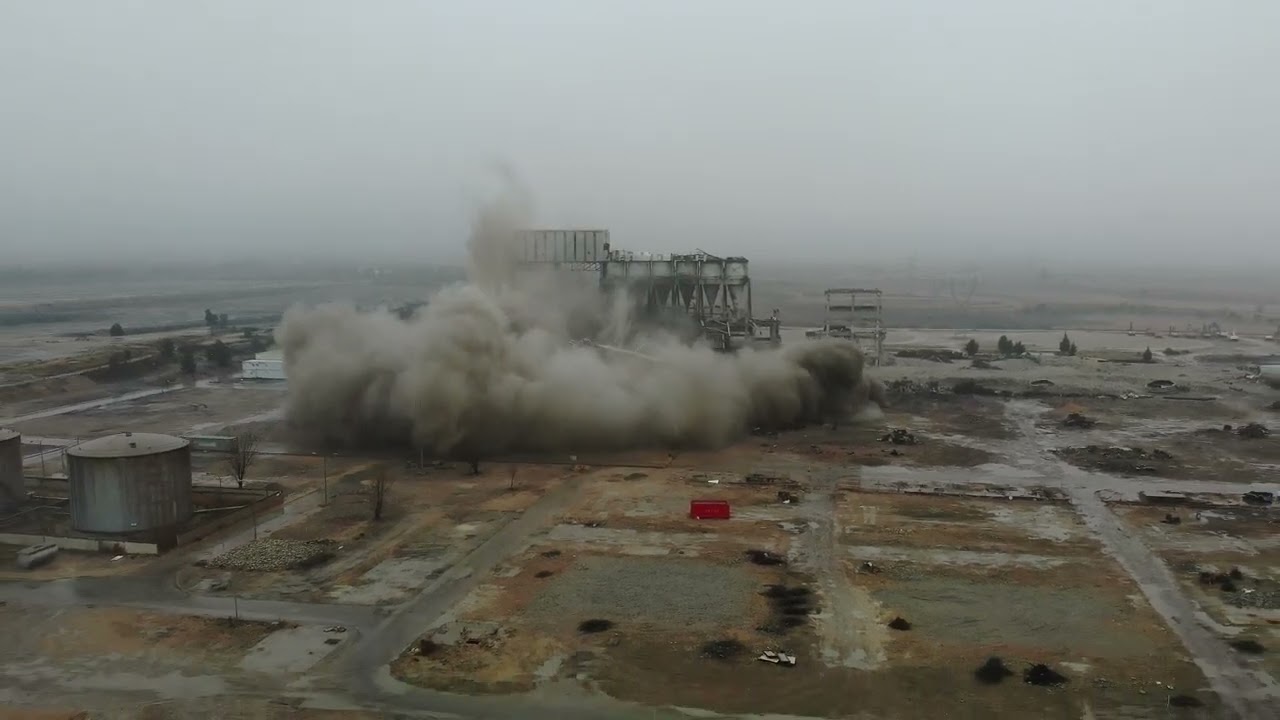Endesa carried out the detonation of the third boiler of the Andorra thermal power plant , built between 1974 and 1975, marking a significant step in the process of closing and dismantling the coal plants that the company plans to complete on the peninsula by the year 2027.
This demolition, which is added to the previous blasting of the cooling towers and the 343-meter chimney, represents both a symbolic and technical milestone. Endesa has implemented meticulous procedures to ensure optimal safety conditions during demolition , especially in the case of boilers, metal elements whose process differs from concrete structures.
How was the Andorra Thermal Power Plant boiler demolished?
The execution of this work was based on a previous specific project that included a structural analysis of the effects of the preparatory work, as well as the dynamics of the blasting, its sequence, direction of fall, mitigating measures and securing of all structures. affected.
The demolition used 340 detonators and 620 kg of explosives , with a safety radius of 400 meters. After the boiler falls, cutting and preparation work is carried out with heavy machinery to ensure safety and avoid working at height.

Each demolition generated around 10,000 tons of metal waste , managed in accordance with environmental regulations. The dismantling of the plant in Teruel, a technically complex operation, involves approximately 250 people, mostly from local companies and the Andorra-Sierra de Arcos region, prioritizing local hiring.
From the environmental perspective, a selective demolition system is being implemented that allows the segregation and characterization of each of the 260,000 tons that make up the demolition volume. In addition, an environmental monitoring plan has been established to minimize impacts on the environment, paying special attention to emissions and discharges during the execution of the works. The reuse of concrete waste is also contemplated with the aim of revalorizing 90% of the waste generated, thus contributing to more sustainable practices.
About the Andorra Thermal Power Plant
The Andorra Thermal Power Plant was made up of three units, with a total capacity of 1,100 megawatts (MW), each equipped with a boiler, turboalternator and cooling tower. The facility was complemented by the coal and limestone park, the ash and slag evacuation system, the desulfurization plant and the 343-meter-high chimney for the expulsion of combustion gases.
It was built with the purpose of using black lignite from the Teruel mining basin, mixed with imported coals. Throughout its four decades of operation, it generated 224,000 gigawatt hours (GWh), equivalent to the annual electricity consumption in the Iberian Peninsula, using 142 million tons of coal, with 110.9 million tons coming from national sources and 31.7 million from tons of imported coal.
In 2019, Endesa requested the closure of the Andorra thermal power plant, beginning its dismantling process and the formulation of a future plan that contemplates the introduction of new industries and the development of renewable energies. As a result, Andorra will transform its energy matrix, moving from coal power generation to clean energy production, with an installed capacity of 1,843.6 MW from seven hybridized renewable projects, two battery storage projects, one green hydrogen project and a synchronous compensator.
This renewable approach is accompanied by a socioeconomic plan aimed at generating employment and added value in the region.
Don’t miss any of our posts and follow us on social media!
Inspenet.com YouTube LinkedIn Facebook Instagram
Source and photo: libremercado.com
Video: Diario de Teruel


